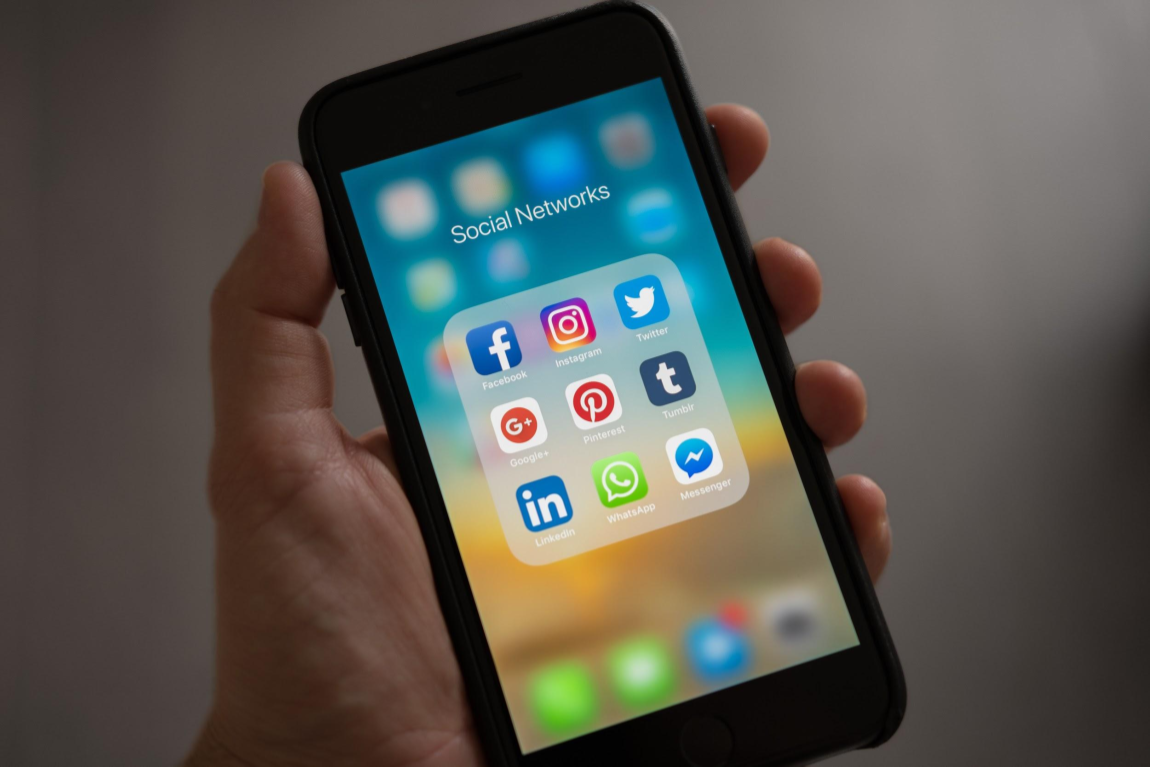by MGB2B

While you might not realize it, LinkedIn for B2B marketing is nothing to sneeze at. In fact, it’s the most dominant social media channel when it comes to B2B marketing. It offers a unique opportunity for brand promotion and lead generation to an audience whose mind is already on business. That alone should make it a must for B2B marketing strategies. Don’t believe it? According to LinkedIn Marketing Solutions, 80% of B2B marketing leads from social media come through LinkedIn. On top of that, 92% of B2B marketers use this platform. What’s more, LinkedIn is responsible for 46% of all social media traffic to B2B websites.
Now that you understand it’s breadth, here’s three ways LinkedIn can work for you:
1. Your Company Page
First and foremost, let’s talk about your main company page. It heightens brand awareness and legitimacy just by the sheer fact of having one. But the more engaging your page, the better it will perform. Here’s where you can share your company story, showcase your executive branding, and create compelling content that establishes trust, authority, and thought leadership. Company and industry news, videos, tutorials, helpful white papers, and infographics all have a home here. And thanks to easy-to-use analytics, you’ll be able to see what is working (and what isn’t) so you can shift your strategy to be more effective.
2. LinkedIn Groups
One of the biggest benefits of LinkedIn for B2B marketing is the group feature. In 2013, 81% of users belonged to at least one group, and that number has only grown. Groups are the epitome of targeted marketing: instead of just having a generic public page, you can develop a niche closed community that connects with individuals with shared interests. Not only are they a great place to foster brand recognition, you can position your company as an industry leader within different sectors. Better yet, groups are a great place to get a micro view of marketing trends and monitor the needs of those you are targeting.
3. LinkedIn Pulse
Pulse gives users daily news related to their specific interests. So if your brand posts about your industry frequently, your stories have a higher chance of being featured on a potential lead’s Pulse feed. This means keeping a regular schedule of consistent, meaningful posts is extremely valuable for increasing your reach – and leads.
Off all the social networks, LinkedIn is the best place to interact professionally with your target audience. Keep in mind, it’s not a place to sell or make deals. Instead, it’s a place to establish your brand as a trustworthy and reputable resource. When you use LinkedIn for B2B marketing, you can attract higher quality leads, create targeted connections, and continually reinforce relationships with prospects and current customers. But like all social media (and marketing for that matter), to succeed, you have to have a strategy in place. If you need help getting off the ground, start by reading this piece on content strategy – or by giving us call.
Continue Reading
by MGB2B

The Myth: We Don’t Need To Hire A Dedicated Social Media Person
The Truth: Social Media Success Requires A Dedicated Role
One of the best things about social media is its simplicity. My father uses Twitter, and he can barely forward an email. But this is where the simplicity ends. Using social media as a marketing channel is far more complex. If you’re thinking of having a staff member add social media to their existing duties, reconsider. There are solid gains to be made in the social landscape, but worthwhile results require dedicated effort. In short, good social media isn’t as simple as it looks.
First, Understand Why Social Media Presence is Vital
81% of the US population used social media in 2017, according to statistica. It is estimated that there were 2.34 billion users of social media last year. You can bet that folks who make purchase decisions on B2B brands were among them. If you have a dedicated person at the helm, the potential for increasing traffic and reaching new customers is limitless. A well-developed social strategy can humanize your brand and offer an efficient way for customers to engage with you. On top of this, market insights are made easy: consumer traffic and responses to certain posts show you what’s working and what isn’t in a very quick and digestible way.
Social Media is More Than Posting
Ok, so you know why you need it. But the benefits mentioned above don’t come from haphazard posting or “spraying and praying.” Here’s what a typical social media expert accomplishes:
Content strategies and calendars.
If you don’t have a firm set of goals, success can elude you. Having someone to create and update a specialized content strategy to push the brand forward and maintain its momentum is vital to your social media presence. This means strategizing a variety of blogs, white papers, infographics, and videos that all work towards the same end goal. On top of this, keeping a detailed schedule of uploads and posts provides a way to monitor the work so far and inform future ideas. This ensures nothing is being oversaturated, underutilized, or ignore. (Want to learn more about content strategies? Read this.)
Content creation and curation.
A social media person is responsible for figuring out what to post and when. This alone is fairly time-consuming. Even simple tasks like picking the right picture to accompany your blog take forethought. Your social media staff member is also responsible for directing what kind of content is needed and who will be creating it. In many cases, they’ll be jumping in and creating the content themselves. (You also need someone dedicated to creating great content, but that’s another topic altogether).
Analysis and Monitoring.
Social media moves fast. It’s hard to anyalize the data on the fly if it’s not your primary responsiblity. Your staff can respond to feedback and trends in real time, nudge what’s working and drop what isn’t. Real-time monitoring not only informs your current campaigns but the ones you haven’t designed yet.
Adjusts with the landscape.
Social media is constantly changing. Your social media specialist can identify the landscape and potential changes. It’s difficult to predict trends and adjust content on the fly if it isn’t your primary job.
This alone is a pretty big job description. And remember, there are always hiccups and social PR bumps along the way. It’s pretty hard to do it all if it’s considered an add-on to another job. In short, (and like everything else), if you want to do it well, you have to do it right.
Have questions about social media? Contact us. We’re here to help.
Continue Reading
by MGB2B

The Myth: Sales and Marketing Are Born Adversaries
The Truth: Sales and Marketing Collaboration Leads to Higher Revenue
The Problem
Within many B2B companies there is a both sales team and a marketing team. But what you will rarely find is sales and marketing in a healthy relationship that ensures mutual success.
Why is this?
From the marketer’s perspective, their number one priority is to generate leads. They are the professionals when it comes to creating a campaign. Leads only get handed over to sales once they enter the buying process.
On the other hand, salespeople sometimes think that marketers are too far removed from customers and the business. How could they understand what’s involved in closing a deal?
Assumptions and doubt from both teams don’t help anyone. Often, one group thinks they could do a better job than the other. Add in different tactics, different mindsets, and varying timeframes, and you’re in trouble. What results is a relationship characterized by tolerance at best, and sales and marketing collaboration is not a priority.
What should happen instead?
The responsibilities within the buying process are often presented as a “funnel.” The very top and widest part of the funnel is buyer awareness, and the narrowest part at the bottom is the actual purchase. A marketing team focuses on top half of the funnel, identifying customer segments. They develop the branding and outreach that will resonate with these customers. Then, they circulate materials across relevant channels to get this message across. Responsibility stays with marketing through the “interest” phase of a customer’s process. Once a customer moves into “consideration” or “intent,” they get handed off to sales. At this point, the salespeople are entirely in charge of making a transaction happen.
The line where marketing efforts end and sales begin varies from company to company and is sometimes a little blurry. It’s clear that both teams integrate simply by the nature of their work. They both work to convert a lead into a sale, and some level of collaboration is necessary to make this handoff seamless.
But the key is that not only does the integration of sales and marketing need to be acknowledged. It needs to be capitalized on. If sales and marketing efforts are completely aligned, your company can improve sales substantially. In fact, the Digital Marketing Institute reported that sales and marketing collaboration potentially generate 208% more marketing revenue for a company and 36% higher customer retention.
So how can this be accomplished?
There are several steps you can take to ensure your marketing and sales efforts are aligned.
- Bridge the communication gap: It sounds cliche, but in this case, communication really is key. If sales and marketing aren’t communicating frequently and efficiently, valuable leads can get lost in translation. On the other hand, constant contact will ensure that both teams are up-to-date on what the other is doing. No one is left in the dark. It can also help each side to hold the other accountable for producing and accomplishing what they should, and making sure they report it correctly.
- Collaborate and socialize: In order to eliminate some of the negative assumptions sales has about marketing, or vice versa, it helps if both teams get to know each other. This doesn’t mean everyone has to become good friends, but genuine face-to-face conversations can create more authentic relationships and a better understanding of what everyone’s role is.
- Create uniformity: There are few things more effective than a consistent message. If sales and marketing are able to synchronize, their combined efforts will be much more powerful than either would be on its own. This may actually mean that some things cross over between the two groups. For example, marketing can adopt some of the quantitative metrics used by sales, and sales in return can use some of the more qualitative marketing techniques when it comes to retaining customers.
Sales and Marketing Collaboration – Mutual Success is Possible
You ultimately may not be able to eliminate all of the tension between your sales and marketing teams. Any two groups within an organization who operate under different strategies and perspectives are naturally going to butt heads every once in a while. But following these tips can help you begin to bridge the gap between two teams who are executing very important work for your company’s main goal.
Continue Reading


